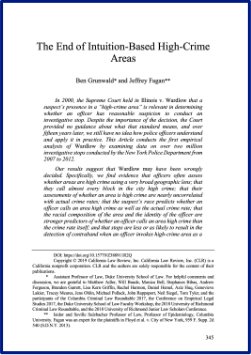By Christi Smith
Driving is a privilege, not a right, in the United States. It is also a privilege that is revoked from millions of Americans, not due to dangerous driving or criminal conduct but because of their failure to pay court-ordered fines, fees and other costs. In fact, every state in the United States imposes debt-based license suspension. While the practice was designed to incentivize people to pay their debts and have their licenses restored, lack of transportation only exacerbates an individual’s inability to maintain stable employment and fulfill financial obligations. Further, the practice of debt-based suspension disproportionately impacts low-income individuals and people of color. Without access to reliable and affordable transportation, people are forced to choose between driving on a suspended license or failing to secure or maintain the work they need to pay fines. Minor debts become major financial obligations when left unaddressed, which ensnares well-meaning people in a cycle of poverty, joblessness or legal violations due to a suspended license.
The practice is particularly burdensome for individuals who are facing legal proceedings and for those on probation or parole supervision who face the threat of punishment for driving to court-ordered appointments on a suspended license or for failing to appear in court for probation/parole check-ins or employment/rehabilitative programming due to a suspended license. This is especially common in rural areas that lack robust public transportation systems. Because criminal penalties fall disproportionately on racial and ethnic minorities, as well people in lower socioeconomic groups, the burden of debt-based license suspensions presents yet another barrier to success for individuals attempting to resolve their court-ordered responsibilities.
Debt-based license suspensions are simply another tool in the judicial system’s arsenal of policies that disproportionately punish poor people and people of color. The policy encourages rather than discourages noncompliance because of the sheer impossibility of existing in a modern world without access to dependable and affordable transportation. The inefficiency of the policy’s ability to recoup court costs and the negative impact on public safety has prompted lawmakers, advocacy organizations, law enforcement groups and researchers on both sides of the aisle to push for an end to debt-based driver’s license suspensions with S. 998, the Driving for Opportunity Act of 2021.
Given the disproportionate burden license-for-payment systems place on indigent individuals, racial minorities and justice-involved persons, it is the purpose of this policy paper to evaluate the extent to which these systems are used; the degree to which the practice unduly harms individuals, families and communities; and the impact of enforcement on incarceration and recidivism rates. This assessment will also include the identification of alternative methods of transportation and existing programs designed to overcome the challenge of transportation with a suspended license. This paper suggests improved policies for debt collection and for providing more effective methods of transportation to individuals subjected to a license suspension.
R STREET POLICY STUDY NO. 254
Washington, DC: R Street, 2022. 6p.





















